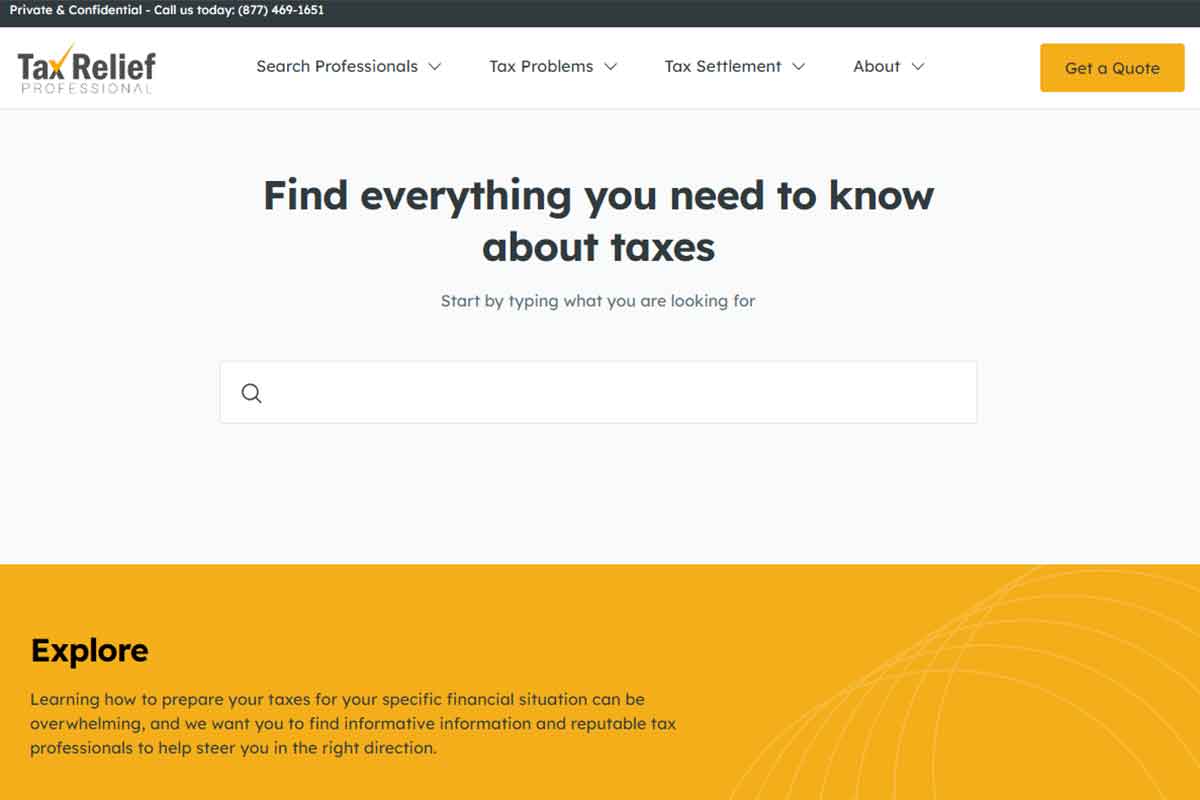What Is a First-Time IRS Penalty Abatement?: The Facts You Need to Know


written by Claudia Grant

reviewed by David J. Allen
There’s nothing more stressful than tax season. You’ve got to figure out what you owe and how many deductions and credits you can claim.
Sometimes, things don’t work out quite the way you expect them to. When that happens, you may find yourself faced with tax penalties.
While getting hit with a tax penalty from the IRS might seem daunting, you have some options for how to handle it. One of those options is an IRS penalty abatement.
If you’ve been hit with a tax penalty and are looking for help, the IRS penalty waiver system could be for you. Let’s take a look at what an IRS penalty abatement is and how it can help you.
What is a First-Time IRS Penalty Abatement?
As unfriendly and intimidating as the IRS may seem, they actually have a number of programs in place to help taxpayers. One of those programs is something called the IRS first-time penalty abatement.
This tax penalty relief is fairly straightforward. It’s a system that was set up by the IRS12 years ago to reward taxpayers who have, until this point in time, had a clean tax record.
The idea behind the first-time penalty abatement is that we all make mistakes, and taxpayers should be allowed some relief the first time around. The IRS uses this penalty abatement to help taxpayers who have made a mistake for the first time so they can get back on their feet.
This penalty waiver is available to anyone who has a failure-to-pay, failure-to-deposit, or failure-to-file penalty. However, many taxpayers aren’t aware of this waiver and so don’t take advantage of it.
The good news is that now that you know about this abatement, you’ll be able to start using it to your advantage!

Who Qualifies for the FTA Penalty Waiver?
Getting an FTA, or first-time abatement penalty waiver isn’t for everyone. You have to meet a few criteria in order to assure that you’re able to take advantage of this waiver:
- You have had no penalties for the past three years or weren’t required to file a return
- You have filed all of your current returns or have filed an extension
- You have paid off or set up a payment plan for any tax that you currently owe
If all of these statements are true, you may qualify for the first-time abatement waiver. However, the IRS also allows for people to receive the FTA waiver if even if they meet a few other criteria.
People will still be eligible for the FTA penalty waiver if they:
- Received a tax penalty more than three years ago
- They had an estimated tax penalty, even if it was given in the past three years
- Got an FTA over three years ago for a different tax penalty
- Receive a tax penalty on years after the year they are requesting the FTA penalty for
- Were given reasonable-cause relief for past penalties
These additional inclusions open up the FTA penalty waiver to more taxpayers. Be sure to check in with a tax relief professional to double-check if you may still be eligible for the IRS first-time penalty abatement.
How Do You Request a First-Time Penalty Abatement?
So, you’ve established that you qualify for the IRS first-time penalty abatement waiver. Good for you! You’re on the right track to getting your taxes taken care of and eliminating penalties.
Now you’re probably wondering how to request an FTA. There are actually a few different ways that you can request a first-time tax penalty abatement.
Request an FTA by Phone
The fastest way to request a first-time tax abatement penalty waiver is by phone. You can call the PPS line at the IRS to request an FTA. Typically, this step is taken care of by a tax professional.
If you are working with a tax professional, he or she will need to have power of attorney in order to request the FTA on your behalf. You can use Form 2848 to request this for your tax professional.
From there, the IRS staff will be able to pull up your account and confirm your eligibility for the FTA waiver. They’ll actually apply the waiver to your tax account right there while you’re on the phone.
After the phone call, you’ll need to keep an eye out for a letter in the mail confirming the application of the FTA. If you haven’t received it within a month, you should call the IRS again to make sure that everything is okay.
Request an FTA by Mail
Not everyone chooses to call the IRS to request an FTA. While sending a letter in the mail takes longer, it’s typically a more surefire way of receiving the penalty waiver if you have a more complicated tax history.
In the letter, you’ll need to make sure to include important information regarding your tax account. This includes:
- the penalty type and amount
- the tax period that you are requesting the FTA for
- your name
- your EIN or SSN
After listing all your personal information, you’ll need to outline why you qualify for the FTA. Attaching tax transcripts and evidence can help prove your case to the IRS and increase your chances of receiving the FTA.
List page numbers, the last four digits of your ID number, and your name at the top of all pages in the letter. Remember, if someone is filing this on your behalf they’ll need to include a form proving that they have power of attorney.
Don’t Pay Excess Penalties on Your Taxes
Receiving a tax penalty is scary, but it’s certainly manageable. By using the FTA penalty waiver, you may be able to get an IRS penalty abatement.
If you’re struggling with tax penalties or preparation, the team at Tax Relief Professional is here with resources that can help. Check out our other articles for tips and tricks on how to stay on top of your taxes and navigate tax season with ease.










